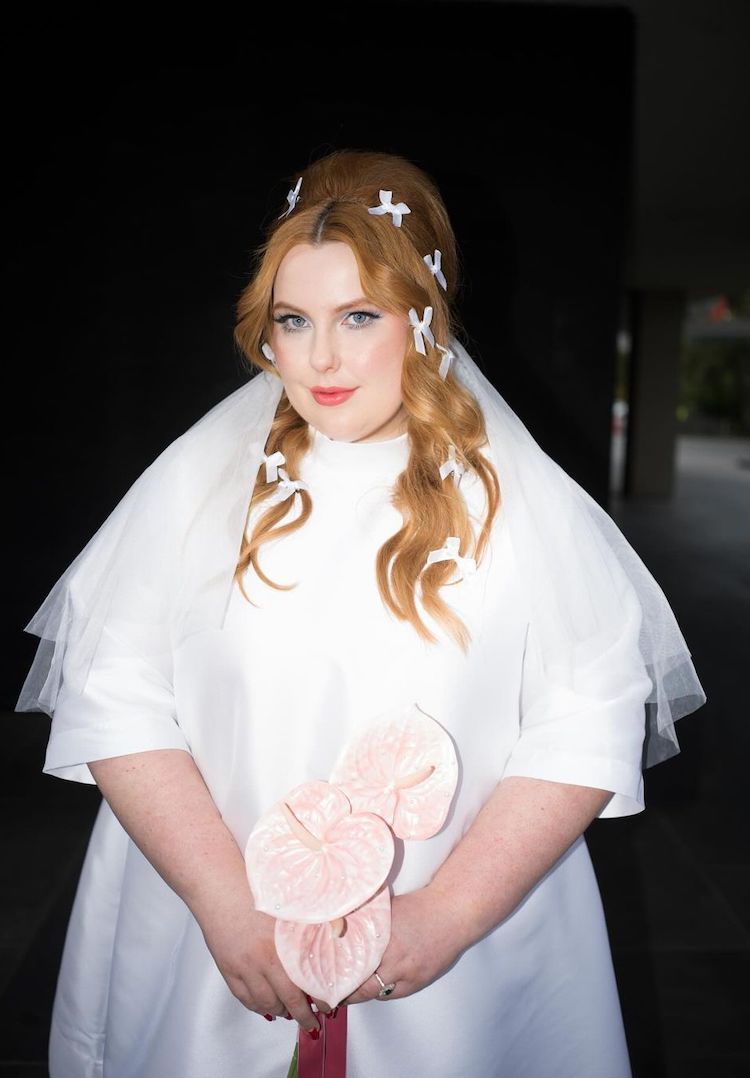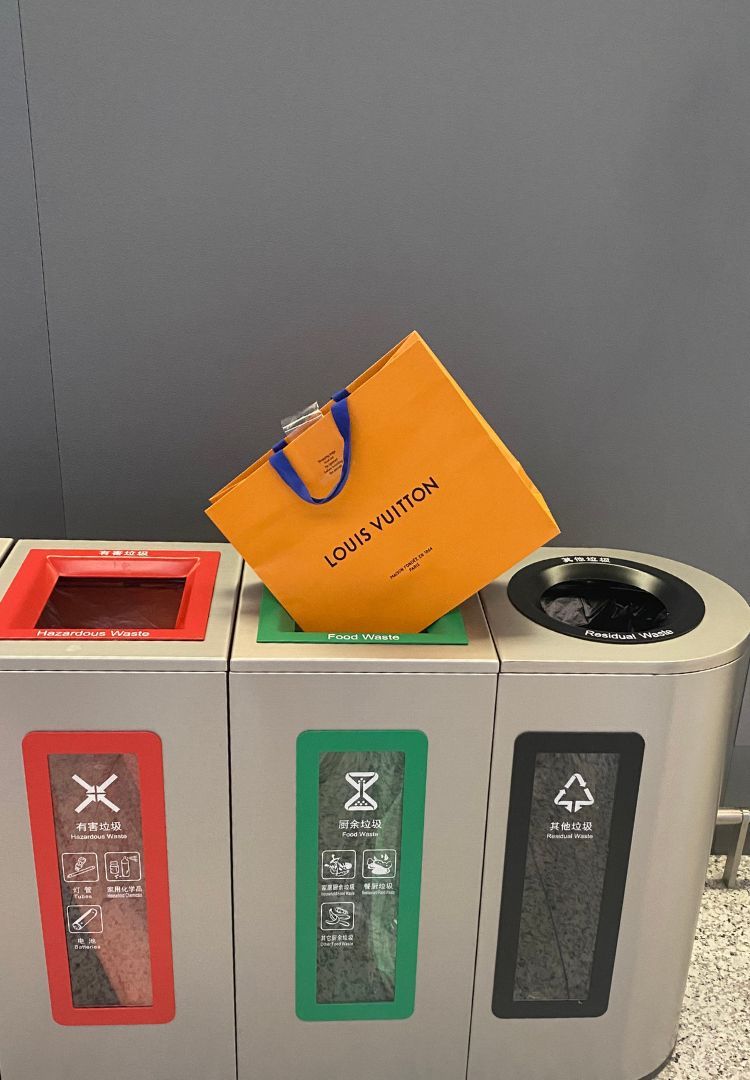Three Australian fashion designers on how they’re lowering their environmental impact
IMAGE VIA LOTTIE HALL
WORDS BY ANGELA KHOUDAIR
“Educate yourself on what sustainability means and set your own benchmarks.”
Living in a consumerist society means fashion brands are constantly touting the latest seasonal microtrend. And while wearing something new feels good, being a conscious consumer is all about understanding the difference between needs and wants; and choosing where you can improve your environmental output.
For more fashion news, shoots, articles and features, head to our Fashion section.
We know the fashion industry has a big (negative) impact on the planet. The equivalent of one garbage truck full of clothes is being burnt or dumped into landfill every second. In Australia, we’re lucky to have a community of incredible local labels who are working to take accountability and lower their environmental impact. Here, three designers share how they’re inciting positive change.
Seraina Fontana, Head Designer at Zulu & Zephyr
View this post on Instagram
Tell us a bit about your sustainability ethos as a designer.
Sustainability is something we have always worked towards… [and now] an element of the business that has now become our north star. As a business… sustainability means prioritising all decisions from a conscious and mindful space first before all other decisions are made. Whilst we recognise that we are not perfect, we are committed to navigating the complexities of a multifaceted industry with a considered and conscious approach.
What does conscious consumption mean to you and how do you integrate this into your design principles?
As we get more education in the sustainability space, it becomes difficult to look away or make decisions that are not consciously led. As a consumer and as an industry leader, this has become important to… [us] in the design choices we make and our own personal shopping experiences.
What are some tips you can give to shoppers about making informed choices when it comes to fashion consumption?
Educate yourself on what sustainability means and set your own benchmarks. Choose better packaging options. Consider preloved or pre-worm items. Read and understand your labels and terminology and take a moment to learn more about your chosen brand via their website, online forums and other consumer experiences.
What’s next for Zulu & Zephyr?
Our aim is to produce three collections each year that emulate our brand DNA and continue to tell our story, whilst furthering our goal to use only recycled fibres in the future.
Holly Chandler, co-founder of Foemina
View this post on Instagram
Tell us a bit about your sustainability ethos as a designer.
Our ethos is deeply rooted in the belief that clothing should not only be aesthetically pleasing, make you feel good and allow you to express yourself but also be environmentally and socially responsible. By embracing sustainability throughout every aspect of Foemina, we strive to contribute to a more mindful and conscientious fashion industry that respects both its community and the planet.
What does conscious consumption mean to you and how do you integrate this into your design principles?
To us, conscious consumption means making informed decisions about where you shop. It involves prioritising quality over quantity, opting for items that are ethically produced, durable and also align with your values.
What are some tips you can give to shoppers about making informed choices when it comes to fashion consumption?
Take the time to research brands before making a purchase. Look into their values, sustainability initiatives and ethical practices. Choose brands that prioritise transparency and accountability. Pay attention to the materials used in clothing items. Look for natural, sustainable fibres like organic cotton and Tencel.
Avoid synthetic materials like polyester and nylon, which are derived from fossil fuels and contribute to pollution. Look for certifications such as Global Organic Textile Standard (GOTS) which indicate that products meet certain environmental and ethical standards. Prioritise quality over quantity.
Invest in well-made clothing that will last longer and withstand multiple wears and washes. Quality pieces can be worn for years to come. Support brands that prioritise sustainable practices such as eco-friendly packaging and carbon footprint minimisation. Every small choice can make a difference in promoting sustainability.
What’s next for Foemina?
As Foemina continues to grow, our environmental vision remains unwavering. There is so much to learn and embrace in this space and it is important to us to see where we can implement more ethical and sustainable strategies into our business.
Looking to the future, Foemina is exploring new approaches to reduce waste. We are partnering with Thread Together, a business that donates new unsold clothing to people in need, protecting the environment by saving the garments from landfills.
We are also teaming up with other sustainable brands to shed light and educate Australians about sustainability issues while promoting awareness of the environmental and social impacts of production and consumption. We hope to create awareness within our community so that they strive to reduce their environmental footprint.
Lottie Hall, founder of Lottie Hall
View this post on Instagram
Tell us a bit about your sustainability ethos as a designer.
My sustainability is totally intertwined with my brand ethos, which is [shown through] limited collections. I design… limited-run collections of 20 to 50 pieces at our long-term factory in Bali. If we sell out, we create more. I can then go up to 120 pieces but that’s only if the demand is there.
… I am never making more than what the customer wants, as making more of what is not wanted breaks my heart and it means styles are going to waste. I use natural fibres only – this is a major one for me. I use recycled fibres where possible (my swimwear is made from recycled plastics). We are also committed to biodegradable packaging, from the factory packaging to the post satchels we send to customers.
What does conscious consumption mean to you and how do you integrate this into your design principles?
The price (higher is better), the fibres/type of fabrication and knowing the brand is always something I take into account. Then it’s about buying right for your personal style/body type, knowing it’s something you will love and be proud to wear with longevity in mind.
My styles are creative, a little loud and super eye-catching, but can be teamed back with the classic basics in your wardrobe. If you’re into the brand you’re gonna feel good in these pieces. They’re not trend pieces so you’re going to love and wear them for a long time.
What are some tips you can give to shoppers about making informed choices when it comes to fashion consumption?
If it’s low-priced, it sends shivers [down my spine] thinking of all the people being paid who have been part of the style’s production. Designers, patternmakers, printers, cutters, sewers… the list truly goes on! Don’t think you are getting a bargain, think you are contributing to bad labour and poorly paid staff.
You don’t have to own a million pieces. A considered, smaller wardrobe of well-made clothes is way cooler to me than lots of trend pieces. A beautiful, expensive top can be worn proudly for years rather than a cheap new top every night out. Depop… is a great way to get updates on your favourite brands and to sell your own [pieces].
What’s next for Lottie Hall?
Art, some exciting collaborations and branching out to some large international stockists.
For more on being a conscious fashion consumer, head here.













